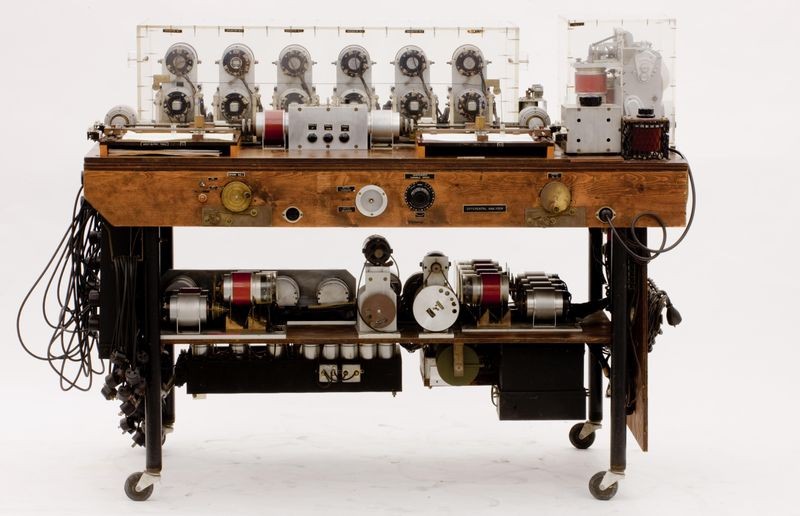

Arnold Nordsieck started building his differential analyzer when most other computing researchers were experimenting with vacuum-tube digital electronic computers. Nordsieck needed a simple, cheap, and practical machine. A small differential analyzer fit the bill. Collection of the Computer History Museum, 102688183. Photo: Mark Richards.
In 1950, the physicist Arnold Nordsieck built himself this analog computer. Nordsieck, then at the University of Illinois, had earned his PhD at the University of California, Berkeley, under Robert Oppenheimer. To make his analog computer for calculating differential equations, the inventive and budget-conscious Nordsieck relied on US $700 worth of military surplus parts, particularly synchros — specialized motors that translate the position of the shaft into an electrical signal, and vice versa.
Nordsieck’s “Synchro Operated Differential Analyzer” was one of many electro-mechanical and electronic analog computers built in the 1950s. Compared with their digital counterparts, they were generally far faster at solving things like differential equations. In Nordsieck’s machine, the synchro units provided mathematical functions like integration and addition. The units were wired to a plugboard, where they could be interconnected in various ways using patch cords.
As with other analog computers, each calculation required its own setup. You plugged in the tangle of patch cords to the left in a particular pattern. The cords served as the computer’s control program, with other parts of the program embodied and executed by the spinning disks, gears, rotating shafts, cranks, and the like. (You can read Nordsieck’s early description of the computer here and his written instructions here.)
The first step of setup was to remove all of the patch cords; you then plugged in the power cord and turned on the computer. Then, you replugged the patch cords in the proper pattern for the desired equation.
Programming the differential analyzer could be painful. “The plugging operation is unfortunately accompanied by an electric shock hazard (though hardly a dangerous one),” Nordsieck warned, “since once one end of a cord is plugged in, the prongs of the free plug may have up to 105 volts of potential difference between them. Hence the operator should hold the live plug in such a way that the prongs do not touch him or anyone else or any metal.” Risk and reward were thus connected, even for a home-brew analog computer.
An abridged version of this article appears in the December 2017 print issue as “A Shocking Solution.”
Part of a continuing series looking at photographs of historical artifacts that embrace the boundless potential of technology.
Originally published at spectrum.ieee.org.